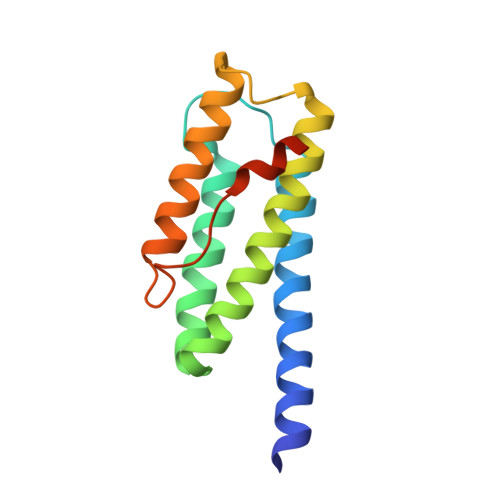Engineered immunogens to elicit antibodies against conserved coronavirus epitopes.
Kapingidza, A.B., Marston, D.J., Harris, C., Wrapp, D., Winters, K., Mielke, D., Xiaozhi, L., Yin, Q., Foulger, A., Parks, R., Barr, M., Newman, A., Schafer, A., Eaton, A., Flores, J.M., Harner, A., Catanzaro Jr., N.J., Mallory, M.L., Mattocks, M.D., Beverly, C., Rhodes, B., Mansouri, K., Van Itallie, E., Vure, P., Dunn, B., Keyes, T., Stanfield-Oakley, S., Woods, C.W., Petzold, E.A., Walter, E.B., Wiehe, K., Edwards, R.J., Montefiori, D.C., Ferrari, G., Baric, R., Cain, D.W., Saunders, K.O., Haynes, B.F., Azoitei, M.L.(2023) Nat Commun 14: 7897-7897
- PubMed: 38036525
- DOI: https://doi.org/10.1038/s41467-023-43638-9
- Primary Citation of Related Structures:
8F5H, 8F5I, 8FDO - PubMed Abstract:
Immune responses to SARS-CoV-2 primarily target the receptor binding domain of the spike protein, which continually mutates to escape acquired immunity. Other regions in the spike S2 subunit, such as the stem helix and the segment encompassing residues 815-823 adjacent to the fusion peptide, are highly conserved across sarbecoviruses and are recognized by broadly reactive antibodies, providing hope that vaccines targeting these epitopes could offer protection against both current and emergent viruses. Here we employ computational modeling to design scaffolded immunogens that display the spike 815-823 peptide and the stem helix epitopes without the distracting and immunodominant receptor binding domain. These engineered proteins bind with high affinity and specificity to the mature and germline versions of previously identified broadly protective human antibodies. Epitope scaffolds interact with both sera and isolated monoclonal antibodies with broadly reactivity from individuals with pre-existing SARS-CoV-2 immunity. When used as immunogens, epitope scaffolds elicit sera with broad betacoronavirus reactivity and protect as "boosts" against live virus challenge in mice, illustrating their potential as components of a future pancoronavirus vaccine.
Organizational Affiliation:
Duke Human Vaccine Institute, Duke University, Durham, NC, USA.














